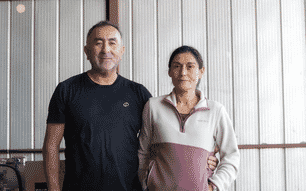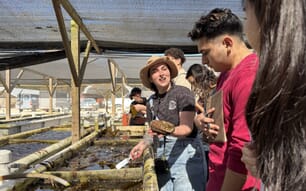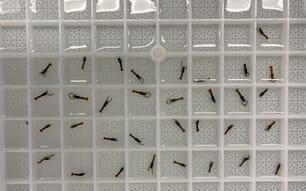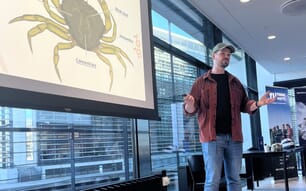
© Mangrove Crab Labs
Co-founded and led by Ismi Putri Rahmah and her husband, Cahyadi, the startup currently operates a 3-hectare site in Cilacap, Central Java. in which 80 percent of their plot is devoted to mangrove restoration and the remaining 20 percent to mud crab aquaculture.
Rahmah has been intermittently involved in mangrove restoration initiatives since 2010, as well as working with women in coastal communities to make a living from these ecosystems.
Meanwhile Cahyadi brings a masters in marine science and practical aquacultural experience, having founded the non-profit Yayasan Pemuda Konservasi Indonesia (YAPERSI) and worked closely with the Cilacap community for 12 years.
His engagement began with research and mangrove planting efforts from 2010 to 2019, during his undergraduate and postgraduate studies. Since 2022, he has expanded his focus into community development – offering training on producing natural dyes from mangrove fruit waste and promoting food security by processing mangrove fruit into edible products.
Since 2023, his work has increasingly centred on implementing sustainable aquaculture practices in collaboration with the people of Cilacap.
Mangrove Crab Labs’ model aims to combine environmental and economic restoration in the region.
“We know that rebuilding ecosystems is really important,” Rahmah explains. “But we also have to support the economy of the community.”
Their site itself was reclaimed from some of the region’s abandoned shrimp ponds — a remnant of a government-led attempt to ramp up shrimp production in the 1990s, which collapsed after initially promising results.
Indeed, as Rahmah explains, many such ponds dot the Indonesian coastline, left idle after a widespread outbreak of white spot disease decimated shrimp stocks. To make matters worse many of these ponds had been carved out of former mangrove areas – and the removal of the trees decimated coastal ecosystems that had supported fishermen and farmers.
After the Covid-19, Rahmah and her husband returned to Cilacap and were disappointed to find that the coastal communities they’d both worked in were struggling to make ends meet, but were trialling an alternative form of aquaculture.
. “They told us about their difficulties, and that they’d started mud crab farming – but didn’t know how to scale it,” she recalls. “We saw that the ponds were abandoned and thought – why not revitalise them?”
The vision for Mangrove Crab Labs was born: to integrate restorative mangrove planting with profitable, community-led mud crab farming.
The model they developed on their pilot plot involved the restoration of two hectares of mangroves, surrounded by a 1 hectare ring of water which holds hundreds of floating crab houses made from recycled water jugs, each containing a single crab – which are currently sourced from wild-caught juveniles.
“We use recycled plastic to make the crab houses because we didn’t have much funding,” says Rahmah. “But they also help the crabs feel at home, reducing stress and mortality.”
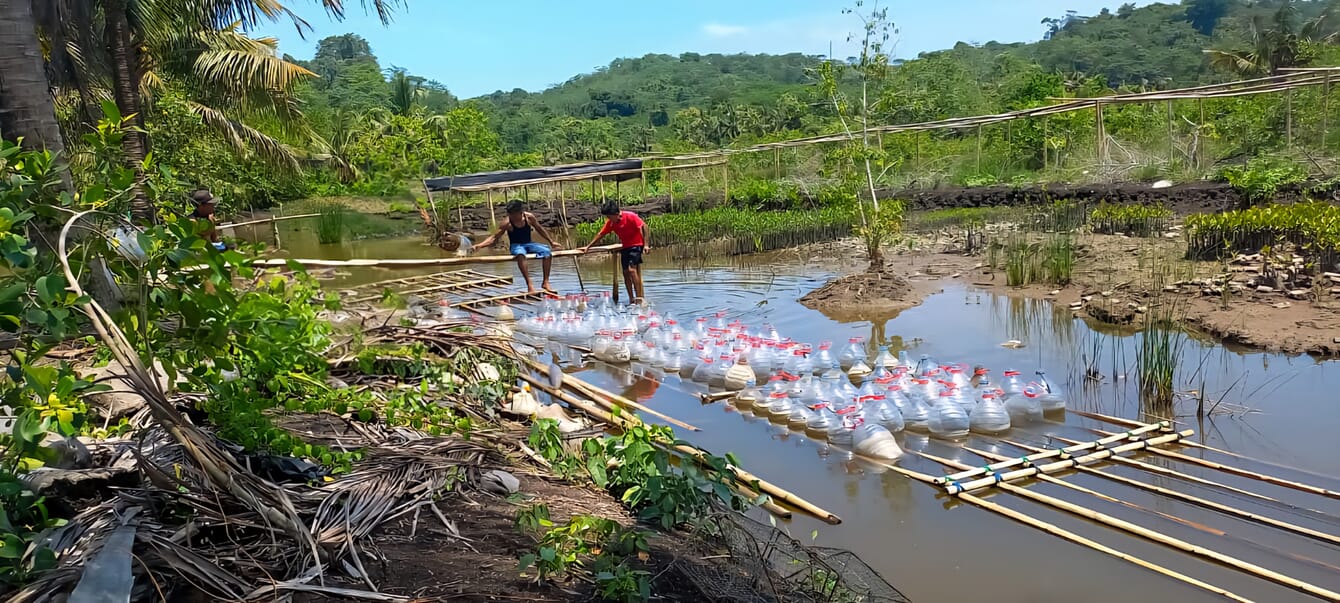
© Mangrove Crab Labs
Despite its modest size the system is proving productive.
“Each month, we harvest a minimum of 300 kg of mud crabs, and sometimes up to 800 kg,” Rahmah says.
According to the founder, it takes two to three months to grow a wild-caught crablet from 50 g to market size of between 300 and 400 g – at which point they are sold live to a range of customers.
To improve efficiency and reduce labour strain, Rahmah dreams of integrating technology – like Internet of Things (IoT) monitoring systems.
“Now, our supervisors have to check the ponds manually, sometimes at 1 am. With IoT, we could monitor the water temperature, pH, salinity and overall water quality from a smartphone,” she reflects.
Their clients currently include 12 hotel, restaurant and catering partners – and demand is rising.
“We’ve had to turn down another 18 potential customers,” Rahmah says. “We just can’t meet the demand with only one hectare of production.”
Community roots
Rahmah is keen to emphasise that Mangrove Crab Labs isn't just a business – it's a social enterprise deeply embedded in the community.
Twenty-five local fishers are directly involved in the farming side, three of whom are engaged full-time in farming – under the supervision of Mangrove Crab Labs’ Mr Joni.
Meanwhile 10 women participate in mangrove restoration. And although restoration is the end goal, the startup is also keen to generate income from these trees, through activities including making syrup, chips and batik dyes from mangrove fruit and waste.
“We do not exploit the mangroves,” Rahmah emphasises. “We only use what has naturally fallen or what is abundant.”
Profit sharing is another central principle – while those involved are paid fixed wages they are also entitled to a generous bonus, linked to monthly profit levels.
“The local community receives 30 percent our profit. They are our priority,” says Rahmah.
In its first seven months, the lab earned $18,000 in revenue — enough to pay staff, reinvest in operations, and replant mangroves where needed.
As CEO, Rahmah takes pride in transparent and values-driven management. “We didn’t want to just use the community to get money,” she says. “We’re doing this together.”
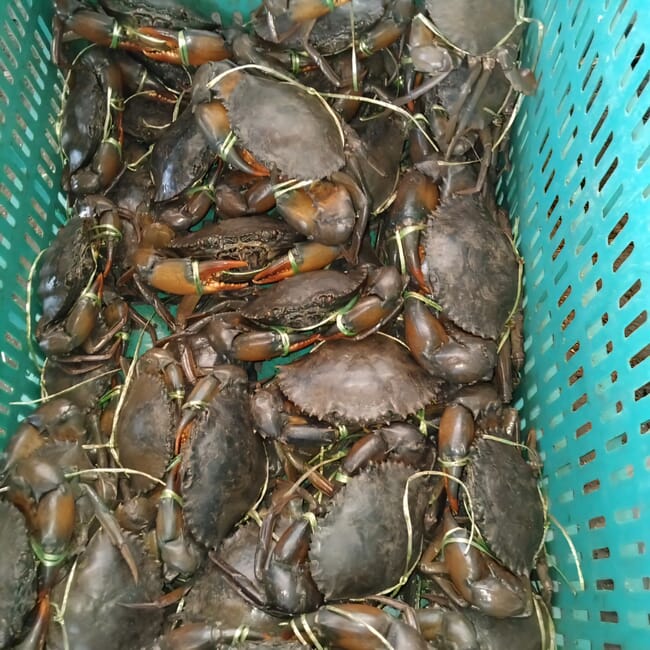
© Mangrove Crab Labs
From crab ranching to genuine aquaculture
In late 2024, Mangrove Crab Labs began developing a hatchery to reduce reliance on wild-caught juveniles in a bid to close the production cycle.
Unfortunately, success initially proved elusive.
“Hatcheries are extremely difficult,” Rahmah admits. “We started with a million eggs and got zero crablets. They all died.”
However, six months later, there’s been some progress.
“In January we had a 0.1 percent survival rate, and by June it reached 0.5 percent. It’s a small number, but it makes us happy – it means our changes are working,” Rahmah reflects.
The team is working to optimise variables like salinity, pH, feeding schedules and even light exposure.
“We hope to raise survival to 2 percent by next year,” she says.
Alongside their plans to improve the hatchery, Mangrove Crab Labs has ambitious plans to scale.
As Rahmah explains, Cilacap alone holds 100 hectares of abandoned shrimp ponds. And by raising a comparatively modest $75,000 in funding, the team believes they could expand by 10 hectares.
“We’re self-funded now, bootstrapping. We’ve applied to three other funding competitions, and we’re hopeful,” she notes.
They are also open to expansion beyond Cilacap and, according to Rahmah, in West Java’s Subang district, other communities have reached out.
“They heard about our work and said, ‘Why not try this here?’. We want to — but first we must ensure Cilacap thrives,” Rahmah emphasises.
Prospects for carbon credits?
While the mangrove restoration element of the project could dovetail nicely with blue carbon credit schemes, Mangrove Crab Labs has been reluctant to go down that route, at least initially, after the locals felt they had been tricked by a previous business which had tried to claim carbon credits and prevent locals from operating on their land.
“The community is traumatised: the group claimed the carbon credits, and told the locals they couldn’t use the land – not even to collect fruit – leaving the local hurts and distrustful on anything related to carbon credits,” ” Rahmah explains.
As a result, she is now working slowly to rebuild trust.
“We want to educate people about what carbon credit projects can really be, if they’re done with integrity. It’s not just about profit, but also about support for livelihoods, environmental benefits, and fair distribution of both credit value and ecosystem benefit,” she reflects.
Until then, Rahmah’s content with the core mission: restoring ecosystems, sustaining livelihoods, and producing sustainable seafood, while offering a potential blueprint for regenerative aquaculture.
“We may be small, but we’ve shown it’s possible to balance nature and economy. That’s our biggest achievement,” she concludes.
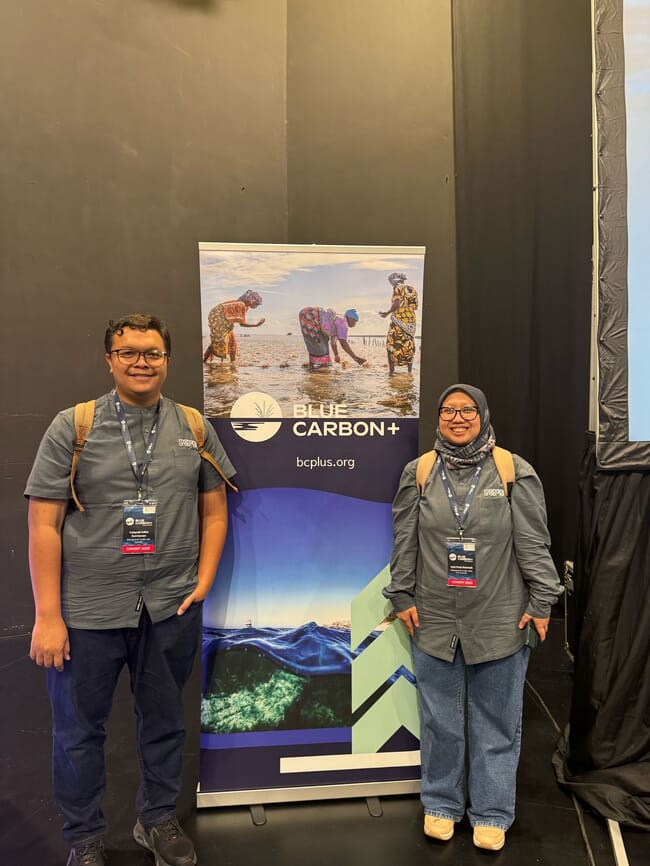
© Mangrove Crab Labs


